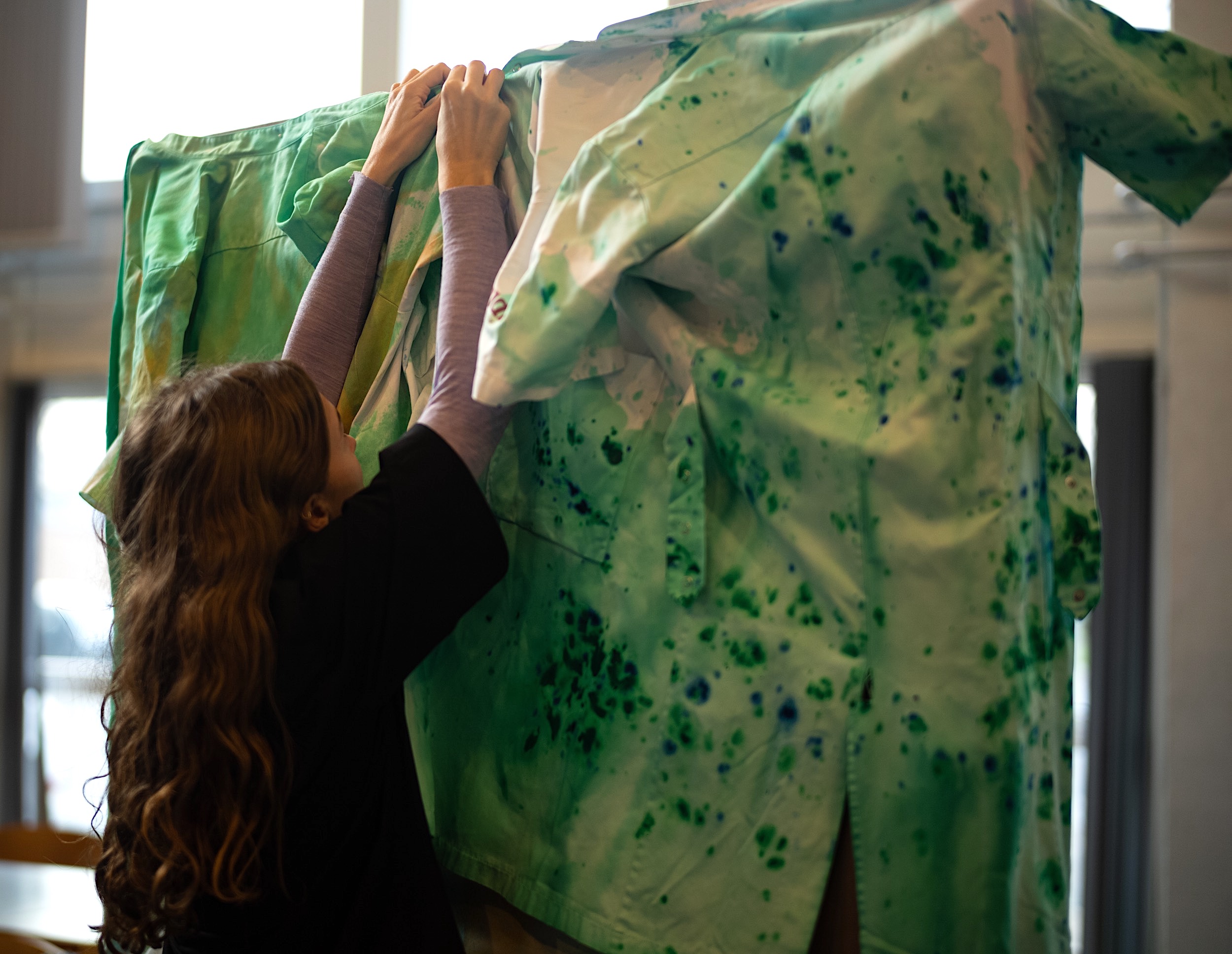The artist is in residence
Denmark has a fairly unique official artist-in-residence programme, in which the government supports partnerships between host organizations and makers, designers, visual artists, writers and other creative practitioners. The goal is to providing inspiration and insight into the field to children and under-25s, thus giving young generations insight into aesthetic and artistic processes and a rare chance to encounter practising artists. Since the programme was launched in 2006, visual artists in particular appear to have cracked the code for successful applications. Meanwhile, professional makers and designers remain poorly represented when it comes to project funding.
Whatever the reasons for this, it is important to change the current distribution for the sake of the makers and designers themselves as well as the young audience. The artist-in-residence programme offers a unique opportunity for engaging in dialogue with children and young people about craftsmanship, sensuous experiences and artistic expression in crafts and design.
Meeting the professionals
Although it is not up to craft artists and designers to transform schools or other settings for children and youth, such an encounter may open doors, reveal new paths and provide inspiration. Professional makers and designers can offer insight into artistic and aesthetic processes, techniques and materials and the use of various tools. Perhaps this experience can be the spark that leads to a future professional craft or design career? Perhaps it can give future political decision-makers an understanding and appreciation of the significance, potential and value of art? Perhaps it can demonstrate the essence of craftsmanship on its own terms and in its own right? By supporting processes rather than finished objects, the artist-in-residence programme helps create an open learning space.
A matter of words
Today, many young people engage in active creative pursuits, from classic textile crafts, such as knitting and sewing, to 3D printing and laser cutting in maker spaces, which are now available in many schools and public libraries. They are interested in the same techniques and tools that are used in crafts (kunsthåndværk) and design, even if they use different terms to describe what they do, including ‘upcycling’, ‘repair’ and the English word ‘craft’. The artist-in-residence programme offers a unique opportunity for giving children, young people – and their teachers – an insight into professional crafts and design. Importantly, this also offers an opportunity for dialogue about professional skills, techniques and materials as well as sensuous aesthetic experiences and the emotional value of being open to sublime craftsmanship and beautiful design as well as the storytelling that is often an integrated aspect.
Are crafts gaining momentum?
The new government that recently came into office in Denmark aims to encourage more young people to choose vocational training and careers. The new Minister of Education even wrote a book about ‘knowledgeable hands’. It will be interesting to see whether the policy statements are backed up by professionally qualified action, so that increased enrolment in vocational programmes does not simply happen as a result of stricter acceptance criteria for academic programmes. Including more makers and designers in the artist in-residence programme would be a good way to convey the grasp of aesthetics and sensuous experiences that comes from working with materials, colours and shapes.
Formkraft follows up
In the coming time, Formkraft will examine why artist-in-residence partnerships between organizations and makers/designers are not more common.
What challenges do practising makers and designers face once they have been approved for a residency? How is the partnership between the maker/designer and the host organization established? What do makers and designers think of the application process? And how do the approved projects benefit makers and designers, host organizations and the children and young people they work with?
Join us as Formkraft takes an in-depth look at the artist-in-residence programme. Designer and member of the artist-in-residence committee Mette Mikkelsen explains how the programme works.
Art historian and writer Mette Bielefeldt Bruun examines selected cases and talks to makers and designers about their projects.
Journalist Lars Hedebo interviews psychologist and researcher Anne Kirketerp about craft psychology and the health benefits of craftwork.
Enjoy!
Artist-in-residence programme
In the artist-in-residence programme the Danish Arts Foundation provides grants for collaborations and partnerships between artists and schools, daycare facilities, municipalities, cultural institutions and associations, which promote children and young people’s encounter with professional art in everyday life.
Programme jury
Mette Mikkelsen, craft and design
Ellen Holmboe, literature
Molly Haslund, art
Ditte Fromseier Hockings, music
Gry Worre Hallberg, performing arts
Marianne Levinsen, architecture
Deadline for applications 1 March and 2 October 2023
References and supplementary reading
Formkraft has been given access to documents in supported projects under the artist-in-residence programme in 2021. In 95 projects, there were 9 practitioners with a craft and/or design-related title. Two of these were involved in two projects each, so there were a total of 11 projects with crafts and/or design.
Haastrup, L og Sørensen, M. Undersøgelse af Huskunstnerordningen, rapport. Statens Kunstfond, 2017
Tesfaye, M. Kloge hænder – et forsvar for håndværk og faglighed, Gyldendal, 2013


